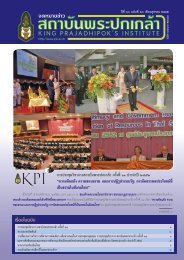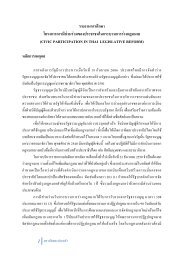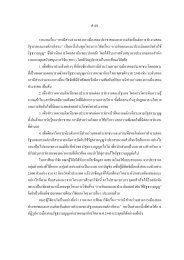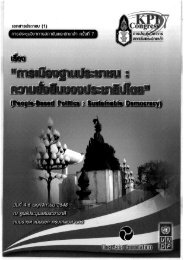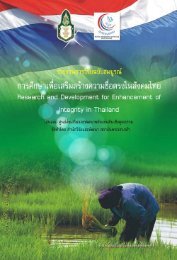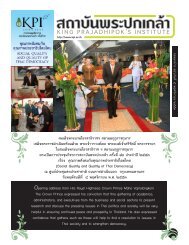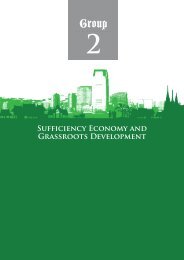Conflict, Legitimacy and Government Reform: Equitable Allocation of ...
Conflict, Legitimacy and Government Reform: Equitable Allocation of ...
Conflict, Legitimacy and Government Reform: Equitable Allocation of ...
You also want an ePaper? Increase the reach of your titles
YUMPU automatically turns print PDFs into web optimized ePapers that Google loves.
<strong>Reform</strong>ing Local <strong>Government</strong> for the Achievement <strong>of</strong> Fairness in Thai Society<br />
education) must work to earn money at a very young age. They<br />
work hard but receive a low wage.<br />
b) Health care services - Even though there are over 9,000 public<br />
health centers spreading across the country but service quality is<br />
not uniform. Moreover, one must accept that in many cases,<br />
budget allocation to operating units <strong>of</strong> Thai authorities, is done<br />
in such as way due to familiarity. So the method may not<br />
conform to the principle <strong>of</strong> equity. 1<br />
c) Most people in this country lack welfare. Only one-third <strong>of</strong> the<br />
country, that is, government employees <strong>and</strong> workers in the social<br />
security system receive their rights <strong>and</strong> welfare <strong>and</strong> other benefits,<br />
while two-thirds <strong>of</strong> Thai people, that is, farmers, laborers <strong>and</strong><br />
small business owners lack many welfares. Regarding these<br />
problems, LAOs are in the position to help upgrade service<br />
quality <strong>and</strong> “close the gap.”<br />
Part 3 explores the progress <strong>of</strong> health-oriented public policy, that is,<br />
sub-district health fund which is a new tool used for behavioral<br />
modification that contributes to people’s health. This scheme accords<br />
with the principles <strong>of</strong> decentralization <strong>and</strong> public participation. This is<br />
done by reviewing results <strong>of</strong> an evaluative study conducted by the<br />
Economics Academic Service Center <strong>and</strong> records <strong>of</strong> the initiatives in each<br />
locality. It is worth noting that sub-district health funds began to operate<br />
in 2006. Initially there were 888 funds. After its operation has run for<br />
only a few years, the number <strong>of</strong> the funds has exp<strong>and</strong>ed to more than<br />
3,000 locations. This is a phenomenon that reflects the dynamics <strong>of</strong><br />
LAOs with respect to health care services.<br />
Part 4 presents an analysis <strong>of</strong> future policies by creating a<br />
hypothetical scenario where property tax will be levied (to reduce income<br />
inequality) <strong>and</strong> the revenue will be used to support poor people <strong>and</strong><br />
1 For example, subsidy per capita <strong>of</strong> municipality <strong>and</strong> sub-district administrative<br />
organization (SAO) <strong>of</strong> Thail<strong>and</strong> adheres to accustomed or customary practices in the<br />
past without any curiosity whether such method conforms to the principle <strong>of</strong> equity on<br />
horizontal or vertical axis or not.<br />
181



